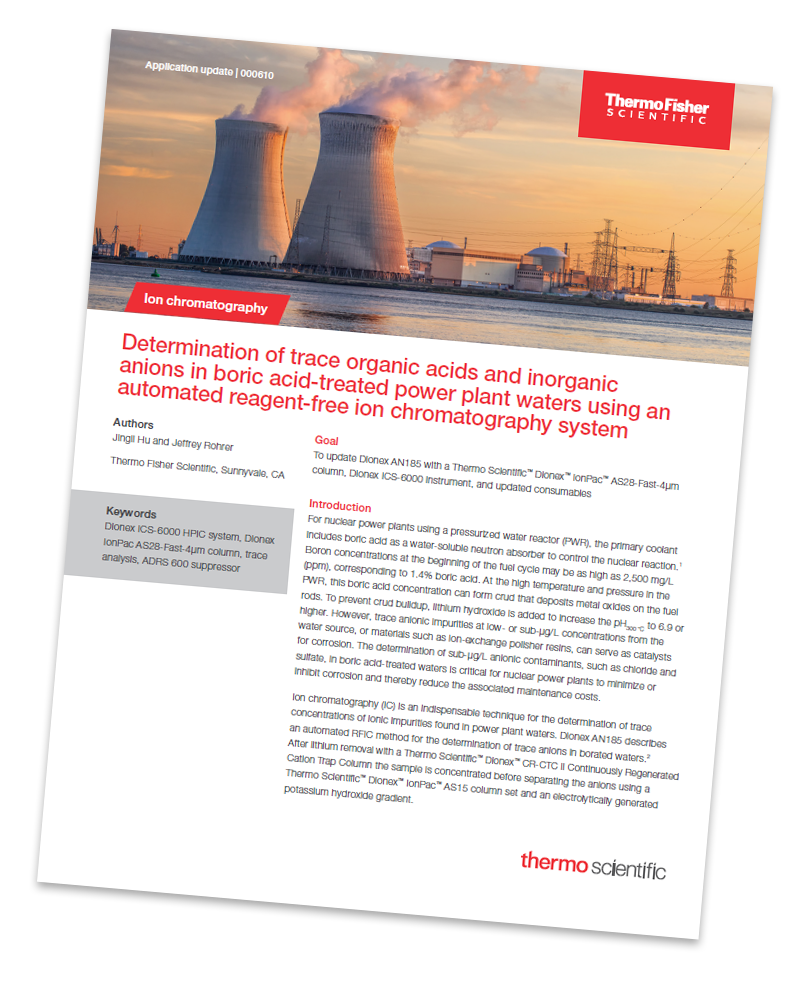This application note introduces a method for a faster and more efficient separation of trace concentrations of ionic impurities found in power plant waters using an automated reagent-free ion chromatography system.
 Introduction
Introduction
Ion chromatography (IC) is an indispensable technique for the determination of trace concentrations of ionic impurities found in power plant waters. After lithium removal with a Thermo Scientific Dionex CR-CTC III Continuously Regenerated Cation Trap Column, the sample is concentrated before separating the anions using a Thermo Scientific Dionex IonPac AS15 column set and an electrolytically generated potassium hydroxide gradient.
Experimental
For full details of equipment, consumables, reagents and standards, sample and chromatographic conditions please download the application note.
Results and Discussion
Separation
The Dionex IonPac AS28-Fast-4μm analytical column in combination with the Dionex AG28-Fast-4μm guard column is designed for the trace analysis of inorganic anions and monovalent organic acids. The selectivity of the Dionex IonPac AS28-Fast-4μm guard plus analytical column set has been designed to retain fluoride well out of the water dip and to separate common anions and low molecular weight organic acids encountered in high purity water matrices using electrolytically generated KOH gradient chromatography.
The Dionex IonPac AS28-Fast-4μm column is a high resolution, high-capacity anion exchange column with selectivity and capacity similar to the Dionex IonPac AS15 column. The high resolution provides better peak identification, and the high capacity allows injection of more concentrated samples without overloading the column.
Conclusion
This application updated AN185 with a Dionex IonPac AS28-Fast-4μm column, Dionex ICS-6000 instrument, Dionex CR-CTC III device, Dionex ADRS 600 suppressor, and Dionex IonPac UTAC-ULP2 concentrator column. The Dionex IonPac AS28-Fast-4μm column provides a faster and better separation of the target inorganic anions and low molecular weight organic acids, such as glycolate, acetate, and formate. The use of an electrolytically generated potassium hydroxide eluent eliminates the problems associated with the manual preparation of hydroxide eluents and, therefore, further increases ease-of-use and method automation. This method demonstrated good linearity, sub-μg/L detection limits, and good precision and accuracy for the target anions.
